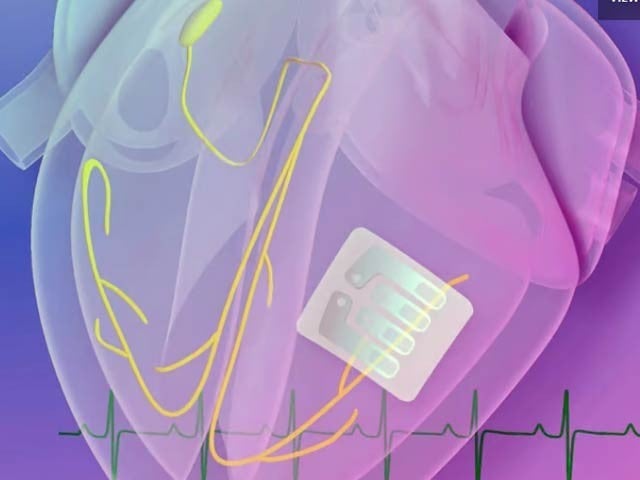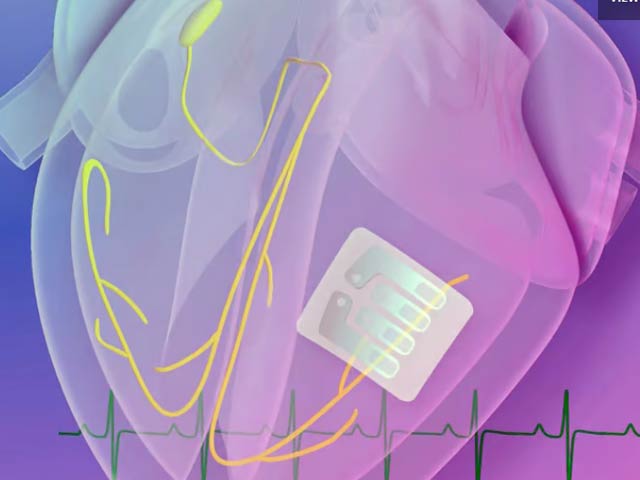
A graphene sticker almost as thin as a human hair has been created that works with light and improves heart rate. Photo: Newatlas
Texas: Irregular heartbeats, if persistent, are treated with electrical ‘pacemakers’, but now a thin, tattoo-like patch based on graphene has been developed that takes its energy from light and records the heartbeat in time. Can also act as a pacemaker.
It was jointly developed by scientists from the University of Texas at Austin and Northwestern University. It is thinner than a hair and sticks to the heart like a tattoo. Due to its size, it does not burden the heart and constantly monitors the heart rate by drawing energy from light. If the heart’s electrical signals are affected, it can correct an irregular heartbeat (arrhythmia) by automatically discharging electricity.
Although the standard treatment is pacemakers, they have several disadvantages due to their weight and size. This new graphene tattoo is essentially very lightweight and thin. Being flexible, this membrane can stick to the heart but can withstand the vibration of the heart beat.
It is called Dil Ka e-Tattoo which monitors heart rate and blood pressure. Above all, it also records the electrical activity of the heart. Its total thickness is only 100 microns while the thickness of human hair is about 70 microns.
Currently they have been tested on mice where their efficacy has been revealed. One tattoo worked for up to 60 days and is thought to be used temporarily to keep a patient up to date before a regular pacemaker is installed.
(function(d, s, id){
var js, fjs = d.getElementsByTagName(s)[0];
if (d.getElementById(id)) {return;}
js = d.createElement(s); js.id = id;
js.src = “//connect.facebook.net/en_US/sdk.js#xfbml=1&version=v2.3&appId=770767426360150”;
fjs.parentNode.insertBefore(js, fjs);
}(document, ‘script’, ‘facebook-jssdk’));
(function(d, s, id) {
var js, fjs = d.getElementsByTagName(s)[0];
if (d.getElementById(id)) return;
js = d.createElement(s); js.id = id;
js.src = “//connect.facebook.net/en_GB/sdk.js#xfbml=1&version=v2.7”;
fjs.parentNode.insertBefore(js, fjs);
}(document, ‘script’, ‘facebook-jssdk’));



